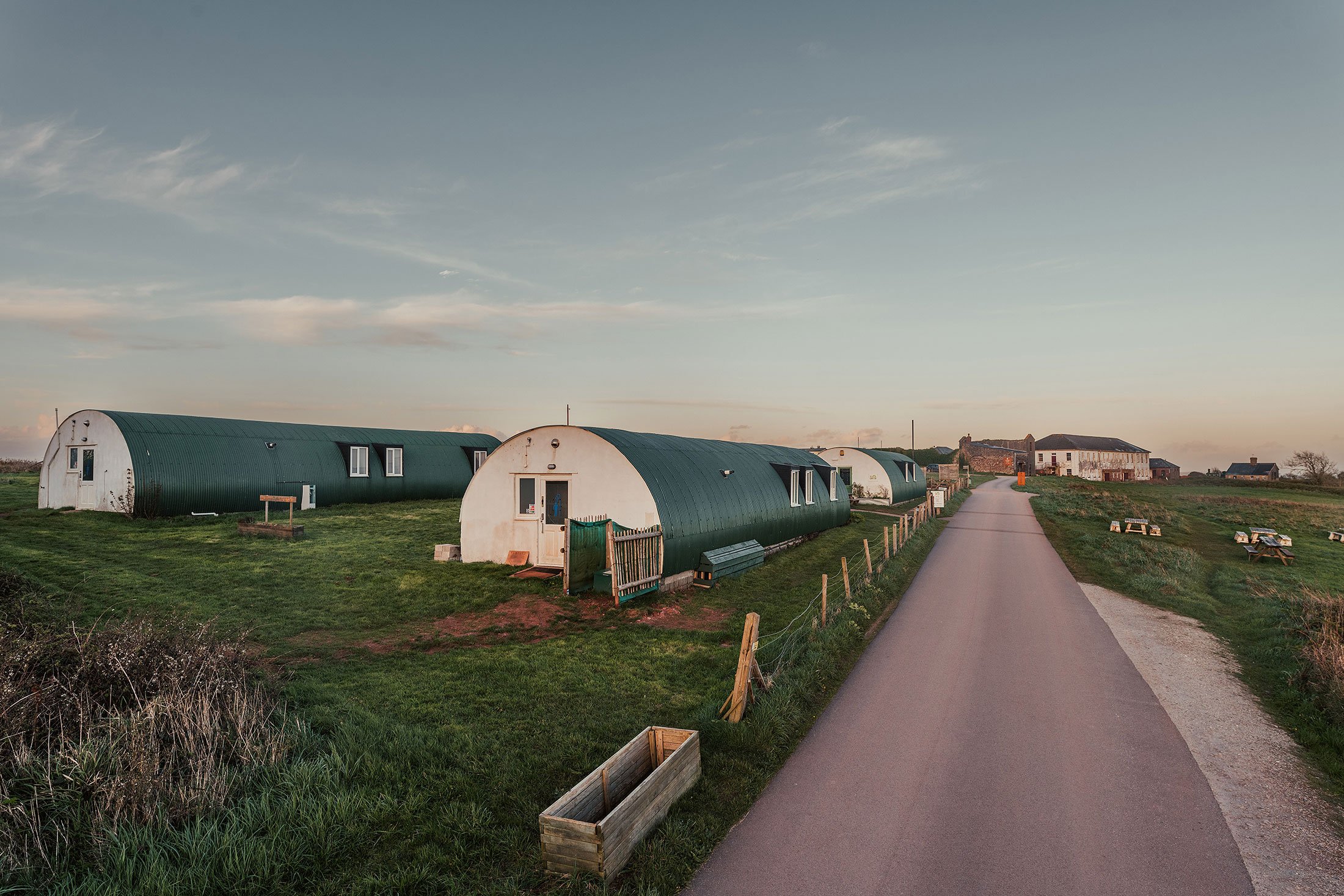
Heavy Anti-
Aircraft Battery
Heavy Anti-Aircraft Battery
It is well known that Plymouth, as a major naval base, became a prime target for the German Luftwaffe early in the Second World War. The Plymouth blitz, with high level heavy bombing, started in 1940, and as a result permanent anti-aircraft defences were hurriedly constructed in key positions around the city, especially to the South and Southwest in the path of the bombers.
At the outset of the war there were two types of air defence – light anti-aircraft (LAA) batteries and heavy anti-aircraft (HAA) batteries. The former was often mobile and designed for use against fast, low flying aircraft using either Lewis or sometimes Bofors guns. However, the HAA batteries were usually fixed concrete structures designed to protect against the high-flying bombers that were sent to attack Plymouth.
These HAA batteries were normally sited outside of a town and their construction tended to follow similar patterns. They were simple structures and layouts were usually in a ‘cloverleaf’ pattern with a ring of four guns centred by a control room, usually supported by a back-up main magazine.
Each ‘leaf’ of the clover position had its gun centred between a roughly circular protective wall made up of ready to use (‘dispense’) ammunition lockers. Often there would be two rooms providing on one side a gun crew shelter, and on the other a parts store. The walls were usually constructed in concrete or block work with a cast concrete protective roof and were banked on the outer sides by earth.
One such HAA battery was here at Maker Heights, and it is located about 200m east of the Barrack block.
The HAA armament was usually a 3.7” gun which had a height range of about 32,000 ft. Later use was made of a 4.5” gun which – when modified increased the height range to about 45,000 ft. This modification involved re-lining the barrel of the 4.5” gun to reduce it back to be able to fire the 3.7” shell, but still using the breach and shell propellant of the 4.5” projectile eg. a more powerful way of firing a 3.7” shell.
The HAA battery here at Maker Heights included the four original 3.7” gun positions on the southern perimeter. Remains can also be seen of the later addition of two 4.5” guns on the northern side. Behind the 3.7” emplacements and central to the battery is the part sunken battery command post/ control room. A separate main magazine was probably situated about 20 yerds behind the command post but, so far, no trace has been found of it – still somewhat puzzling.
Radar (Radio Direction Finding) was incorporated in the battery, with a mast and a large octagonal Radar mat (a Gun-Laying Radar platform or GL mat) , at least 65yd wide (probably 120yd wide at first) to help with calibration. The mat was made of 2-inch square wire mesh supported 5 inches off the ground by hundreds of tensioned wires on wooden stilts/stakes. It was accessed by a wooden catwalk.
Many of these Second World War HAA batteries have disappeared as most were destroyed after the war. The HAA site at Maker is therefore a rare survivor and is now cared for by the Rame Conservation Trust.
The HAA battery is open to public access, but as with all old military buildings care should taken if visited.
Heavy Anti-Aircraft Battery gallery










